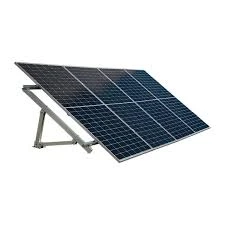Maximizing Efficiency in Solar Panel Conversion for Sustainable Energy Solutions
Understanding Solar Panel Conversion Efficiency A Key to Sustainable Energy
As the world moves increasingly towards renewable energy sources, solar power has emerged as a frontrunner in the quest for sustainable solutions to our energy needs. At the heart of this technology lies a critical concept solar panel conversion efficiency. Understanding what this term means and its implications for solar energy production is essential for both consumers and industry stakeholders.
What is Solar Panel Conversion Efficiency?
Solar panel conversion efficiency refers to the percentage of sunlight that a solar panel can convert into usable electricity. For instance, if a solar panel has a conversion efficiency of 20%, it means that 20% of the solar energy hitting the panel is transformed into electrical energy, while the remaining 80% is either reflected, absorbed as heat, or otherwise lost in the conversion process.
The efficiency of a solar panel is influenced by several factors, including the materials used in its construction, the design and technology behind the panel, and environmental conditions such as temperature and the angle of sunlight.
Types of Solar Panels and Their Efficiencies
There are mainly three types of solar panels monocrystalline, polycrystalline, and thin-film solar panels, each with varying levels of efficiency.
1. Monocrystalline Panels Known for their high efficiency, monocrystalline panels are made from a single continuous crystal structure. They typically achieve conversion efficiencies between 15% and 22%, with some premium products pushing beyond 23%. Their high efficiency makes them a popular choice for residential installations where space is limited.
solar panel conversion efficiency

2. Polycrystalline Panels These panels are made from multiple silicon crystals melted together. As a result, they tend to have lower efficiency ratings, usually between 13% and 18%. While they are generally less expensive than monocrystalline options, their lower efficiency means that more surface area is required to produce the same amount of energy.
3. Thin-Film Solar Panels These are made by layering photovoltaic materials on a substrate, which allows for a lighter and more flexible design. However, they typically have the lowest efficiency, ranging from 10% to 12%. Thin-film panels are advantageous in applications where weight and flexibility are crucial, but they require more space to generate the same energy output as the other types.
The Importance of High Efficiency
Higher conversion efficiency translates into more energy produced from the same amount of sunlight, making it a critical factor in maximizing energy yield and minimizing land use. With the growing demand for renewable energy, improving solar panel efficiency has become a priority for researchers and manufacturers alike.
Increasing efficiency not only enhances the return on investment for solar panel users but also plays a significant role in reducing the overall costs associated with solar energy systems. As traditional energy sources remain volatile and environmentally damaging, even slight improvements in solar panel efficiency can have substantial impacts on our transition to a clean energy future.
Future of Solar Panel Efficiency
The quest for higher solar panel conversion efficiency continues to drive innovation within the industry. Emerging technologies such as bifacial solar panels, which can capture sunlight on both sides, and advanced materials like perovskite solar cells, have shown the potential to exceed the conventional limits of solar efficiency. Furthermore, research in optimizing the placement and installation of solar panels is vital for maximizing the effectiveness of existing technologies.
In conclusion, solar panel conversion efficiency is a fundamental aspect of harnessing solar energy effectively. As technology progresses and efficiency rates climb, the potential for solar power to meet energy demands sustainably grows stronger. For consumers and policymakers, understanding and prioritizing solar panel efficiency will be essential in making informed decisions that contribute to a greener planet. As we move forward, the role of renewable energy will be pivotal in combating climate change and paving the way towards a sustainable energy future.
-
String Solar Inverter: The High-Efficiency Solution for Smart Solar EnergyNewsJul.14,2025
-
Revolutionizing Rooftop Energy with the Power of the Micro Solar InverterNewsJul.14,2025
-
Power Independence with Smart Off Grid Solar Inverter SolutionsNewsJul.14,2025
-
On Grid Solar Inverter: Powering the Future with Smart Grid IntegrationNewsJul.14,2025
-
Monocrystalline Solar Panels: High-Efficiency Power for the Future of Clean EnergyNewsJul.14,2025
-
Bifacial Solar Panel: A Smarter Investment for Next-Generation Energy SystemsNewsJul.14,2025







